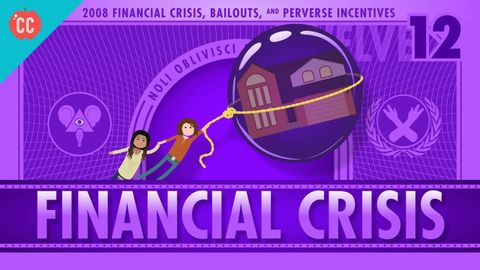
字幕と単語
2008年の金融危機。クラッシュコース経済学#12 (The 2008 Financial Crisis: Crash Course Economics #12)
00
張辰 が 2021 年 01 月 14 日 に投稿保存
動画の中の単語
back
US /bæk/
・
UK /bæk/
- adj.(前から一番遠い)後部の
- v.t.金を賭ける;応援する
- n.背 : 背もたれ;後ろ;裏面;背中
- v.i.(車を)後ろへ動かす : バックさせる
- adv.もとに戻って
A1 初級TOEIC
もっと見る start
US /stɑrt/
・
UK /stɑ:t/
- n. (c./u.)開始時刻 : 開始場所 : 開始;開始場所:開始時刻;始まり;はっとすること
- v.t./i.始める : 始まる
- v.t.(機器などを)起動する
A1 初級
もっと見る prime
US /praɪm/
・
UK /praɪm/
- v.t.準備させる;下塗りをする;爆発させる準備をする
- adj.最高の;最高の;最も重要な;主要な;最適の;素数
- n.最盛期;全盛期;下塗り;素数;最優遇貸出金利
A2 初級TOEIC
もっと見る エネルギーを使用
すべての単語を解除
発音・解説・フィルター機能を解除
